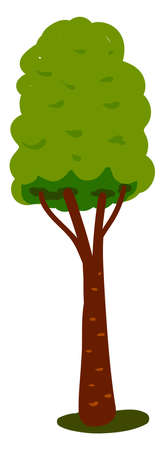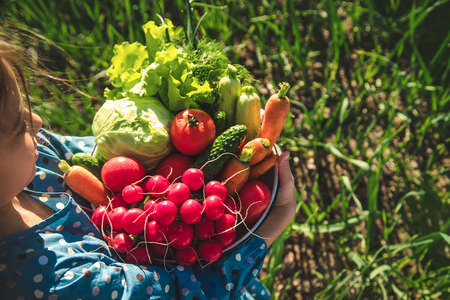Introduction to Monsoon Gardening in India
The arrival of the monsoon is a much-awaited event across India, bringing life to the parched earth and a sense of celebration to homes and communities. For Indian gardeners, the monsoon season is not just about relief from the summer heat; it is an auspicious time deeply rooted in tradition and culture. The rhythmic rains inspire poetry, music, and vibrant festivals, but they also mark the perfect opportunity for nurturing gardens with fresh plantings. The moist, cool conditions of this period provide the ideal environment for native species to establish strong roots and flourish. Planting during the monsoon offers many benefits: enhanced soil moisture, reduced irrigation needs, and a natural boost in plant growth. Understanding these seasonal advantages allows garden lovers to make mindful choices, fostering lush landscapes that thrive with minimal effort while honouring India’s ecological heritage.
2. Why Native Plants Thrive During the Indian Monsoon
Indias monsoon season is both a challenge and a blessing for gardeners. The heavy rains, high humidity, and periodic flooding create unique conditions that only certain plants can truly flourish in. Native species—those that have evolved over centuries within Indias diverse climates—are naturally equipped to handle these challenges. Their resilience and adaptability make them the backbone of any successful monsoon garden.
The Resilience of Indigenous Species
Unlike exotic or imported plants, native varieties have developed deep root systems, specialized leaf structures, and flexible growth habits tailored for local weather patterns. This natural adaptation means less maintenance and higher survival rates during unpredictable monsoon showers.
| Plant Feature | How It Helps During Monsoon |
|---|---|
| Deep Root Systems | Prevents soil erosion and helps absorb excess water |
| Waxy or Hairy Leaves | Reduces fungal infections common in humid conditions |
| Flexible Stems | Withstands strong winds and heavy rainfall |
Supporting Local Biodiversity
Cultivating indigenous plants does more than beautify your space; it also nurtures local wildlife. Native flowering species attract pollinators like bees, butterflies, and birds, which are crucial for maintaining ecological balance. During the monsoon, when food sources may be scarce due to flooding, these plants become vital lifelines for many creatures.
Benefits for Gardeners and the Environment
- Lower water requirements once established
- Reduced need for chemical fertilizers and pesticides
- Stronger resistance to common pests and diseases
Local Wisdom: Embracing Traditional Choices
Indian gardeners have long relied on native monsoon plants such as Tulsi (Holy Basil), Hibiscus, and Plumeria not only for their beauty but also for their medicinal and cultural value. These time-tested choices continue to prove their worth every rainy season, making them perfect additions to modern gardens that wish to remain rooted in tradition while thriving with minimal fuss.

3. Top Native Monsoon Plants for Indian Homes and Gardens
When the first showers of monsoon arrive, Indian gardens come alive with vibrant greens and colourful blooms. Choosing native plants not only ensures easy care but also supports local biodiversity and traditional practices. Here is a curated list of Indian-origin plants that truly thrive during the rainy season:
Hibiscus (Gudhal)
The Hibiscus, locally known as Gudhal or Japa Pushpa, is a classic monsoon bloomer found in countless Indian homes. Its bright red, pink, or white flowers are not just visually appealing but also hold significance in Ayurveda and Hindu rituals. Hibiscus tea is a popular herbal infusion, while the flowers are often used for hair care in South Indian traditions.
Plumeria (Champa/Frangipani)
Known as Champa or Frangipani, Plumeria is a fragrant staple in tropical Indian gardens. Its creamy-white and yellow blossoms appear throughout the monsoon, filling the air with a sweet scent. Traditionally, Champa flowers are offered at temples and woven into garlands for festive occasions.
Moringa (Drumstick Tree/Sahjan)
Moringa oleifera, called Sahjan in Hindi or Murungai in Tamil, flourishes with the onset of rains. This hardy tree is cherished for its highly nutritious leaves and pods, commonly used in sambhar, curries, and even as a health supplement. Moringas resilience to heavy rainfall makes it ideal for kitchen gardens across India.
Other Noteworthy Native Choices
- Coleus (Patharchur): With its colourful foliage, Coleus adds texture to monsoon beds and is used in folk medicine.
- Tulsi (Holy Basil): Revered for spiritual and medicinal properties; thrives well with ample monsoon moisture.
- Curry Leaf (Kadi Patta): Essential for tempering dishes, this aromatic shrub loves the wet weather.
Why Choose Native?
Selecting indigenous plants like these ensures your garden remains lush with minimal effort during the rainy months. Their deep-rooted cultural connections and adaptability to local climates make them both practical and meaningful choices for any Indian home.
4. Popular Local Favourites: Region-Specific Plant Choices
India’s vast landscape and diverse climate zones create unique gardening traditions, with each region nurturing its own beloved monsoon plants. Understanding and choosing regional favourites not only supports local biodiversity but also ensures plants thrive naturally during the rainy season. Here is a look at some cherished monsoon plants from across the country, reflecting both tradition and adaptation:
| Region | Popular Monsoon Plants | Local Significance |
|---|---|---|
| Kerala (Western Ghats) | Mullu Murikku (Erythrina indica), Neelakurinji (Strobilanthes kunthiana), Jackfruit Tree (Artocarpus heterophyllus) | Lush foliage, seasonal blooms; vital for home gardens and traditional medicines |
| Bengal & Assam (East India) | Kadam (Neolamarckia cadamba), Hibiscus, Water Lilies | Sacred in festivals, attract pollinators; commonly seen in rural courtyards |
| Maharashtra & Gujarat (West India) | Tulsi (Holy Basil), Indian Laburnum (Amaltas), Plumeria | Integral to pooja rituals; drought-tolerant choices suit urban balconies and courtyards |
| Rajasthan (Arid North-West) | Khejri (Prosopis cineraria), Rohida (Tecomella undulata), Bougainvillea | Hardy shrubs; crucial for combating desertification and sustaining rural livelihoods |
| Tamil Nadu & Andhra Pradesh (South-East Coast) | Pongamia, Neem, Jasmine (Malligai) | Scented blossoms; used for garlands and shade in home gardens |
The diversity of these native choices highlights how Indian gardeners blend practicality with tradition. From Kerala’s rain-fed greenery to Rajasthan’s resilient shrubs, every region has evolved its own favourites that thrive under specific monsoon conditions. Growing such locally-adapted plants is not just eco-friendly—it’s a way of celebrating our rich heritage and passing it on through generations.
5. Easy Monsoon Care: Indian Gardening Tips & Common Practices
Gardening during the monsoon season in India is both rewarding and challenging, especially when it comes to nurturing native and locally suited plants. Here are some practical tips for home gardeners to ensure that your green patch thrives throughout the rains.
Sustainable Watering Practices
While the monsoon brings plenty of natural moisture, it’s essential to avoid waterlogging which can damage roots. Ensure your garden beds have good drainage—raised beds or terracotta pots with drainage holes work wonders. Water only when necessary, preferably early mornings or late evenings, and always check soil moisture before watering.
Organic Soil Enrichment Techniques
The heavy rains can wash away nutrients from the soil. To replenish, use homemade compost from kitchen waste or well-rotted cow dung (gobar), both commonly available in Indian households. Mulching with dry leaves, coconut husk, or straw helps retain moisture and keeps the soil temperature steady. Regularly mix neem cake or vermicompost into the soil for added enrichment and plant health.
Keeping Pests at Bay During Monsoons
Indian monsoons attract snails, slugs, and fungal diseases. Sprinkle ash or crushed eggshells around tender plants as a natural deterrent for pests like snails. For fungal issues, spray a mild solution of neem oil mixed with water—a tried-and-true Indian remedy. Keep an eye out for stagnant water, as it’s a breeding ground for mosquitoes and root rot; ensure pots and beds drain freely after each downpour.
Smart Local Practices
Rotate crops every season to prevent soil fatigue—a tip passed down by many Indian home gardeners. Grow companion plants like marigold (genda phool) which naturally repel harmful insects and add vibrant colour to your garden. Collect rainwater in barrels (matkas) for later use during drier days—this is not only sustainable but also saves on water bills.
Conclusion
With these easy and eco-friendly gardening practices, you can make the most of the Indian monsoon while supporting native plant species and keeping your garden healthy all season long.
6. Conclusion: Embracing Local Wisdom for Greener Monsoon Spaces
As we reflect on the deep connection between Indian culture and monsoon gardening, it becomes clear that embracing native plants is more than just a gardening choice—it is an act of respecting centuries-old traditions and local ecological wisdom. The monsoon season has always played a central role in shaping our agricultural practices, festivals, and daily lives. By choosing native species and locally adapted varieties, we are not only ensuring the survival of resilient flora but also preserving the unique green heritage of India.
Cultivating local plants during the rainy season supports biodiversity, attracts indigenous pollinators like butterflies and bees, and conserves water—values that have long been celebrated in Indian households. This approach aligns with the sustainable ethos found in many Indian proverbs and customs, where nature is treated as a cherished ally. Whether you’re planting Tulsi near your doorstep or nurturing a patch of vetiver to prevent soil erosion, every act of mindful gardening contributes to a greener, healthier environment.
Let us draw inspiration from our roots and make conscious efforts to blend tradition with modern gardening techniques. Nurturing native flora is not just about beautifying our homes; it’s about giving back to the land that sustains us. Together, we can create monsoon gardens that stand as vibrant symbols of resilience, sustainability, and cultural pride for generations to come.

